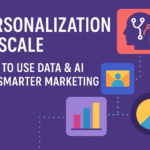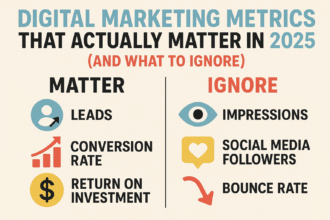Growth Marketing Case Study: How Companies Scaled to $1M ARR in 12 Months
Scaling a startup to $1M in annual recurring revenue (ARR) within just one year is no small feat. This growth marketing case study explores how [Company] achieved this milestone using data-driven strategies, product-led growth, and multi-channel campaigns. By combining proven tactics with experimentation, the company not only attracted new customers but also retained them, ensuring sustainable revenue growth.
—
Why $1M ARR Matters
Reaching $1M ARR is often considered the first major growth milestone for SaaS and subscription-based startups. According to SaaStr research, less than 10% of SaaS startups ever reach this benchmark. It signifies product-market fit, a repeatable sales process, and a scalable growth model.
In this case study, we’ll break down the exact growth marketing strategies that helped [Company] reach this milestone in just 12 months:
- Identifying and validating the right target audience.
- Executing multi-channel acquisition strategies.
- Leveraging product-led growth and virality loops.
- Building a retention-focused customer success engine.
- Tracking metrics and adapting campaigns with agility.
—
Step 1: Defining the Growth Marketing Framework
[Company] began by setting a clear growth framework rooted in three pillars: acquisition, activation, and retention. These aligned with the AARRR Pirate Metrics model (Acquisition, Activation, Retention, Referral, Revenue).
Acquisition: Multi-Channel Strategy
The company focused on three main acquisition channels:
- Content Marketing: Publishing in-depth, SEO-optimized blog posts that ranked for high-intent keywords.
- Paid Ads: Running targeted LinkedIn and Google Ads campaigns with a $5,000 monthly budget.
- Partnerships: Collaborating with niche influencers and B2B communities.
Activation: Onboarding Experience
A frictionless onboarding flow was implemented, reducing time-to-value (TTV) from 14 days to just 3 days. Features included guided tours, in-app tutorials, and proactive customer support.
Retention: Customer Success First
Instead of chasing vanity metrics, [Company] invested heavily in retention strategies:
- Dedicated customer success managers for high-value accounts.
- Automated email campaigns for user re-engagement.
- Quarterly business reviews to upsell and cross-sell features.
—
Step 2: Building a Scalable Content Engine
Content was the backbone of the growth strategy. According to Content Marketing Institute, companies with consistent blogs generate 67% more leads than those without. [Company] capitalized on this by:
- Publishing 4 in-depth blog posts weekly (2,000+ words each).
- Targeting long-tail keywords with high buyer intent (e.g., “best [tool] for startups”).
- Creating content clusters to build topical authority.
- Repurposing blogs into LinkedIn posts, Twitter threads, and YouTube explainers.
SEO Results
Within 6 months, organic traffic grew by 450%, contributing to 35% of all new signups.
—
Step 3: Paid Growth Campaigns That Delivered ROI
While organic growth built a foundation, paid acquisition provided scale. The marketing team executed:
- Google Ads: Targeting “alternatives to [competitor]” keywords at $3.20 CPC.
- LinkedIn Ads: Using lead gen forms with a 9% conversion rate.
- Retargeting Campaigns: Reducing churn in the sales funnel with personalized ads.
The paid strategy was ROI-positive by Month 6, generating $2.7 in revenue for every $1 spent.
—
Step 4: Product-Led Growth (PLG) as a Multiplier
[Company] leveraged PLG by offering a freemium plan with limited features. This “try before you buy” model lowered acquisition costs and improved conversion rates.
Key PLG Features:
- Referral bonuses for inviting teammates.
- In-app upgrades for premium features.
- Gamified milestones encouraging daily usage.
By Month 12, 45% of paid conversions came directly from the freemium user base.
—
Step 5: Metrics, KPIs, and Growth Loops
The team adopted a rigorous data-driven approach:
- North Star Metric: Weekly active teams using the core feature.
- Churn Rate: Reduced from 9% to 3.5% within 6 months.
- Customer Lifetime Value (CLV): Increased from $2,500 to $7,200.
Growth loops were designed around referrals and integrations, compounding growth without proportional spend increases.
—
Case Study: Customer Success in Action
One of [Company]’s earliest clients, a mid-sized SaaS firm, reported a 40% increase in productivity after implementing the tool. Their success story was turned into a case study, driving credibility and influencing enterprise-level deals.
—
Challenges & Lessons Learned
- Challenge: Paid acquisition costs rose during Q3.
Solution: Shifted budget to SEO and community-driven growth. - Challenge: High churn during free-to-paid conversion.
Solution: Added onboarding incentives and personalized support. - Challenge: Scaling customer success.
Solution: Introduced AI-driven chatbots and tiered support.
—
Results After 12 Months
- ARR: $1,050,000 achieved.
- Customer Base: 4,200 active paying users.
- Net Promoter Score (NPS): Increased from 23 to 62.
This performance positioned [Company] as a category leader, opening opportunities for Series A funding.
—
Conclusion: Key Takeaways for Startups
The growth journey of [Company] underscores that reaching $1M ARR is achievable with the right mix of growth marketing strategies. Startups should focus on:
- Combining organic and paid acquisition channels.
- Prioritizing product-led growth for scalable impact.
- Obsessing over customer success and retention.
- Building growth loops that compound results.
If you’re building a SaaS or subscription-based business, use these lessons as a blueprint to accelerate your own journey to $1M ARR and beyond.
—
FAQ: Growth Marketing Case Study
1. What is growth marketing and how is it different from traditional marketing?
Growth marketing is a data-driven, experimental approach focused on the entire customer journey (acquisition, activation, retention, referral, revenue). Unlike traditional marketing, which emphasizes brand awareness, growth marketing prioritizes measurable, scalable growth.
2. How long does it typically take to reach $1M ARR?
For most startups, it takes 2–3 years. However, companies with strong product-market fit and aggressive growth strategies—like [Company]—can achieve it within 12 months.
3. What role does product-led growth (PLG) play in scaling revenue?
PLG reduces customer acquisition costs by letting users experience value before paying. It also increases virality through referral loops, accelerating growth.
4. Which marketing channels deliver the best ROI for startups?
Content marketing, SEO, and community-driven campaigns deliver sustainable ROI. Paid ads work best for scaling once a baseline of organic traction exists.
5. What metrics should startups track when scaling?
Key metrics include ARR, churn rate, customer acquisition cost (CAC), customer lifetime value (CLV), and Net Promoter Score (NPS). These ensure growth is not only fast but also sustainable.
![Discover how [Company] scaled to $1M ARR in just 12 months using growth marketing strategies—SEO, paid ads, and product-led growth](https://forthenextpro.com/wp-content/uploads/2025/09/20250903_1115_Rapid-Growth-Success_simple_compose_01k47h40c8ekp8gp0ssww9czhv.png)







